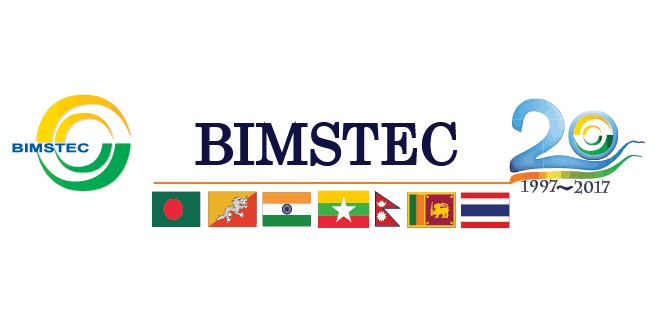The regional group constitutes a bridge between South and South East Asia and represents a reinforcement of relations among these countries. BIMSTEC has also established a platform for intra-regional cooperation between SAARC and ASEAN members. The BIMSTEC region is home to around 1.5 billion people which constitute around 22% of the global population with a combined gross domestic product (GDP) of 2.7 trillion economy. In the last five years, BIMSTEC Member States have been able to sustain an average 6.5% economic growth trajectory despite global financial meltdown.
Bay of Bengal
The objective of building such an alliance was to harness shared and accelerated growth through mutual cooperation in different areas of common interests by mitigating the onslaught of globalization and by utilizing regional resources and geographical advantages. Unlike many other regional groupings, BIMSTEC is a sector-driven cooperative organization. Starting with six sectors—including trade, technology, energy, transport, tourism and fisheries—for sectoral cooperation in the late 1997, it expanded to embrace nine more sectors—including agriculture, public health, poverty alleviation, counter-terrorism, environment, culture, people to people contact and climate change—in 2008.
What is BIMSTEC summit?
The Bay of Bengal Initiative for Multi-Sectoral Technical and Economic Cooperation (BIMSTEC) is a regional organization comprising of seven member states in South Asia and Southeast Asia lying in littoral and adjacent areas of Bay of Bengal constituting a contiguous regional unity.
When was BIMSTEC established?
This sub-regional organisation came into being on June 6, 1997, through the Bangkok Declaration. It is headquartered in Dhaka, Bangladesh.
Which seven countries are members of BIMSTEC summit?
It comprises of seven member countries: five deriving from South Asia – including Bangladesh, Bhutan, India, Nepal, Sri Lanka – and two from Southeast Asia, including Myanmar and Thailand.
Objectives
There are 14 main sectors of BIMSTEC along technological and economic cooperation among south Asian and southeast Asian countries along the coast of the Bay of Bengal.
- Trade & Investment
- Transport & Communication
- Energy
- Tourism
- Technology
- Fisheries
- Agriculture
- Public Health
- Poverty Alleviation
- Counter-Terrorism & Transnational Crime
- Environment & Disaster Management
- People-to-People Contact
- Cultural Cooperation
- Climate Change
Sectors 7 to 13 were added at the 8th Ministerial Meeting in Dhaka in 2005 while the 14th sector was added in 11th Ministerial Meeting in New Delhi in 2008.
Member nations are denoted as Lead Countries for each sector.
Provide cooperation to one another for the provision of training and research facilities in educational vocational and technical fields. Promote active collaboration and mutual assistance in economic, social, technical and scientific fields of common interest. It also provides help to increase the socio-economic growth of the member countries.
Amendments in the BIMSTEC organisation
Initially, the economic bloc was formed with four Member States with the acronym ‘BIST-EC’ (Bangladesh, India, Sri Lanka and Thailand Economic Cooperation)
Following the inclusion of Myanmar during a special Ministerial Meeting in Bangkok on December 22, 1997, the group was renamed ‘BIMST-EC’ (Bangladesh, India, Myanmar, Sri Lanka and Thailand Economic Cooperation)
With the admission of Nepal and Bhutan at the 6th Ministerial Meeting in February 2004, the name of the grouping was changed to ‘Bay of Bengal Initiative for Multi-Sectoral Technical and Economic Cooperation’ (BIMSTEC).
 Kids Portal For Parents India Kids Network
Kids Portal For Parents India Kids Network





